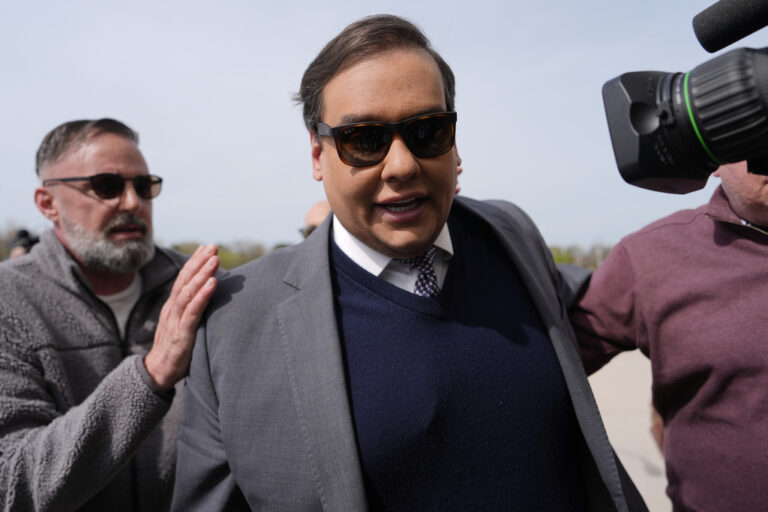Lawyers arguing in jeans and hoodies. A justice who has been silent for years regularly talking. A sound like a toilet flushing during the discussion of a case.
Arguments at the Supreme Court have looked and sounded a lot different over the past year since the justices closed their marble-columned courtroom to the public and began hearing cases by telephone because of the coronavirus pandemic.
The justices have now heard nearly 50 arguments by phone. And more than 100 attorneys have called in to the virtual sessions, some from homes and offices hundreds or thousands of miles from Washington. One of the justices has been in Massachusetts.
The court has said it will hear arguments by phone at least through March. But it’s unclear when in-person arguments might resume or what, if anything, might change when they do. More than anything, the past year has forced the court to alter its traditions in ways it would likely not otherwise have considered.
“I like it, but I’m not sure I’d like to do it all the time,” Justice Stephen Breyer has said of the telephone arguments. “I sometimes think, well, it’s less fun,” added Breyer, who has been living in Cambridge, Massachusetts.
The justices were last together on the bench on March 9, 2020, four days before then-President Donald Trump declared COVID-19 a national emergency. A year ago Tuesday, the court postponed arguments scheduled for late March and early April. Ultimately, the justices settled on arguments by telephone — rejecting video for security reasons — and heard their first phone arguments in May.
The court itself has changed a lot since then. Liberal Justice Ruth Bader Ginsburg died and was replaced by conservative Justice Amy Coney Barrett, shifting the court to the right. But Barrett herself has yet to join an in-person argument, where the justices typically jockey for question-asking time.
Phone arguments are more sedate, with each justice asking questions for three minutes in order of seniority. Arguments generally take longer than the hour they last in the courtroom, and the court is letting the public to listen to the arguments live, rather than releasing the audio days later.
The change to one-by-one questioning has prompted Justice Clarence Thomas, who has criticized what he sees as “far too many questions” at in-person arguments and often gone years without asking a question, to participate in every argument.
During recent arguments in a water dispute between Florida and Georgia, Thomas quipped that the dispute could be titled: “The Case of the Disappearing Water.” The next day, he chuckled while bantering with a lawyer who used her cookie-eating 6-year-old to make a legal analogy.
There were early hiccups in the arguments, but not many. Justice Sonia Sotomayor forgot to take herself off mute. Breyer got cut off when someone tried calling him. And it’s still unclear what exactly happened on day three of telephone arguments when listeners thought they heard a toilet flush.
What the public learned was that the justices “weren’t any better at this than any of the rest of us,” said Drexel University law professor Lisa Tucker.
It’s been an adjustment for lawyers too. Ruthanne Deutsch, who gave her first Supreme Court argument from her home in Virginia, said that in preparation, her husband silenced everything in the house that could make noise, including a cuckoo clock.
Another lawyer, André Bélanger, tried replicating the courtroom experience. He stood at a podium, wore a suit and tie and spoke to a line of framed 8×10 photos of the justices. “That was actually very, very helpful,” he said.
Other lawyers have worn comfortable clothing. “I didn’t feel like it would in any way be disrespectful to the justices not to get dressed up because they weren’t looking at me,” said lawyer Jonathan M. Freiman, who wore jeans and a wool hoodie. “I didn’t have the hood up,” he said.
Telephone arguments have their upsides. Freiman’s clients, who are in Germany and would not have attended in-person arguments, were able to listen in real time. Stanford law professor Jeffrey Fisher, who has done four telephone Supreme Court arguments, said that recently, he conferred with students who were assisting him during another lawyer’s argument.
Despite the changes, the court has tried to maintain some traditions. The court’s marshal begins telephone arguments with the traditional cry of “Oyez! Oyez! Oyez!” and a gavel bang. The court has also been mailing arguing lawyers the white quill pens they would have received as souvenirs at in-person arguments.
Still, the justices gave up their tradition of shaking hands when they began meeting virtually. And, speaking at his son’s virtual high school graduation in May, Chief Justice John Roberts was coy about what the justices themselves wear to argument.
“I was asked whether the justices participating in arguments from their homes would wear robes. I didn’t know if the person was asking: judicial or bath,” he joked, without saying which is true.
(AP)











